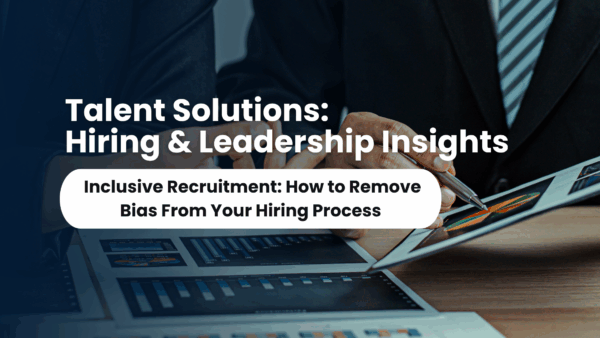Inclusive Recruitment: How to Remove Bias From Your Hiring Process
Building a diverse workforce starts with an inclusive recruitment process. Yet even well-meaning hiring practices can harbor unconscious bias—subtly favoring certain backgrounds, experiences, or demographics. To attract top talent from all walks of life, organizations must actively identify and eliminate these biases at every stage of hiring.
Here are key strategies to create a fairer, more inclusive recruitment process:
- Start With Inclusive Job Descriptions
The language you use in job ads can influence who applies. Certain words may inadvertently discourage candidates from underrepresented groups—for example, overly aggressive or “masculine” language (like “rockstar” or “ninja”) can deter women, while jargon-heavy descriptions can exclude non-native speakers.
Action tip: Use gender-neutral language, emphasize inclusive values, and focus on essential skills rather than unnecessary requirements. Tools like Textio can help optimize job listings for inclusivity.
- Blind Resume Screening
Unconscious bias often creeps in at the resume review stage. Names, addresses, schools, or graduation dates can trigger assumptions—conscious or not—about a candidate’s race, gender, socioeconomic background, or age.
Action tip: Use blind screening tools to anonymize resumes and focus evaluations on experience, skills, and accomplishments.
- Structure Your Interviews
Unstructured interviews can become breeding grounds for bias, where decisions are influenced by likeability or “culture fit” rather than objective criteria.
Action tip: Use standardized interview questions and scoring rubrics. Train interviewers to evaluate responses consistently, and base hiring decisions on evidence, not intuition.
- Diversify Your Hiring Panels
Homogeneous interview panels may unconsciously favor candidates who resemble them. Including a diverse range of perspectives in the hiring process helps reduce individual bias and promotes broader thinking.
Action tip: Build interview panels with employees of different genders, ethnicities, backgrounds, and roles whenever possible.
- Expand Your Talent Pools
If you’re only recruiting from the same universities, job boards, or networks, you’re likely drawing from a limited demographic.
Action tip: Partner with organizations that support underrepresented groups, advertise on diverse platforms, and tap into community groups, bootcamps, and alternative talent pipelines.
- Track Your Hiring Data
You can’t improve what you don’t measure. Regularly analyze your recruitment funnel—application rates, interview conversions, offers extended—broken down by gender, ethnicity, age, and other relevant categories.
Action tip: Look for patterns of exclusion or drop-off and adjust your sourcing and selection strategies accordingly.
Conclusion
Removing bias from hiring isn’t a one-time fix—it’s an ongoing commitment to fairness, equity, and inclusion. By intentionally designing a recruitment process that values diverse talent and minimizes prejudice, companies can build stronger teams, unlock innovation, and reflect the diverse world they serve. The path to inclusive hiring begins with awareness—and continues through action.

